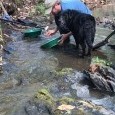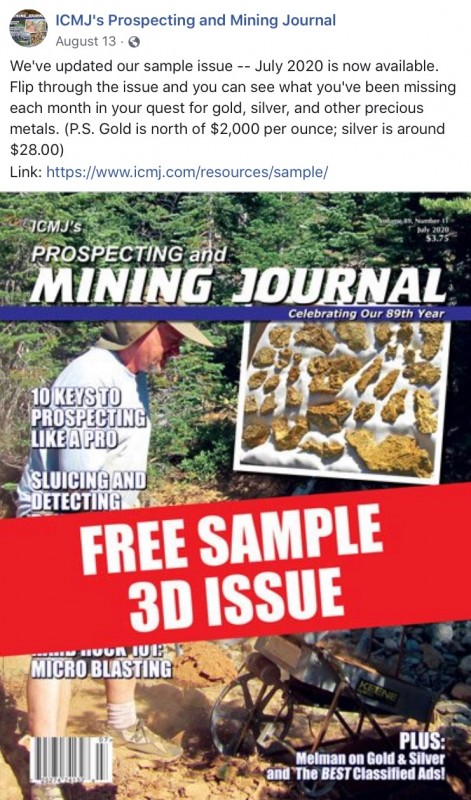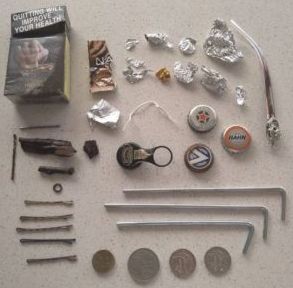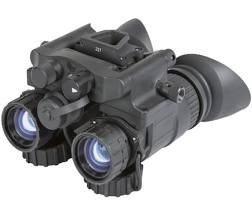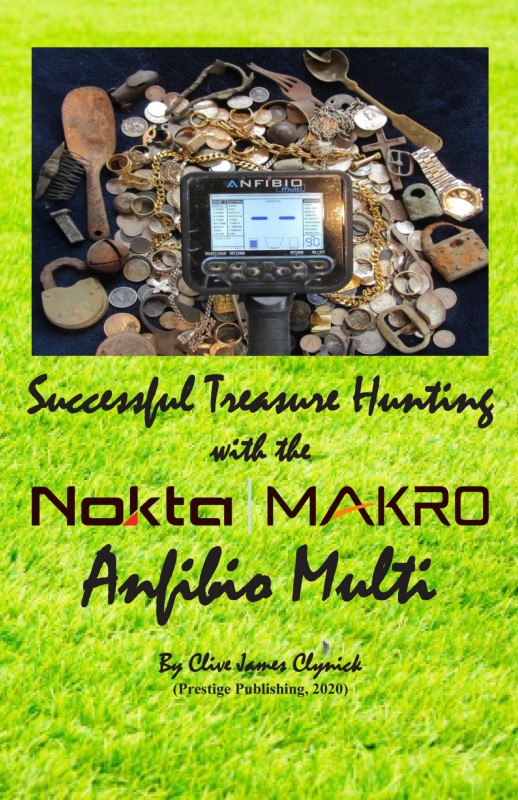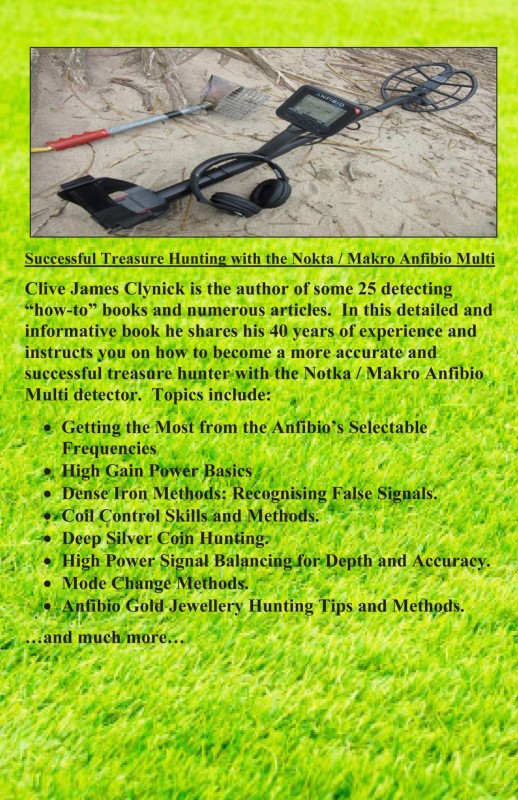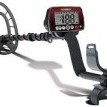Search the Community
Showing results for tags 'research'.
-
Hey everyone! I recently managed to get my website launched that is dealing primarily with providing LIDAR to prospectors and detectorists. I will say after taking almost a month to build i appreciated what Steve does here now even more!. The website is directed at LIDAR for prospectors and detectorists, but my eventual goal is for it to be the go to source for prospecting research as well, this is because i am slowly adding to the Document Library that i been building there, and over the coming months i will be adding all the various prospecting and mining related documents that ive found in my research. The overall plan is to make the document library the a one stop place for all gold related documents, that way when a prospector is doing research he doesn't have to scour the web for obscure hard to find articles. After you look at the site please leave feed back here as this is the first website that ive built and it was learning process to say the least! Well here is the link! https://theprospectinggeologist.com/
-
Companies are less enthused these days about spending a lot of money on color print catalogs. It costs a lot, and no way to update when something changes. Cases of them printed at great cost often end up in a dumpster, wasting money and trees. Fisher has not printed anything up in awhile, and the last catalog I had was from 2016. Anyway, I managed to locate a Fisher 2018 metal detector catalog, which appears to be the most up-to-date one done. You can download it at the link, but the only change I see from the 2016 catalog is the addition of the F-Pulse pinpointer. Nice brochure though if you do not already have the 2016 version. Presumably once the new Fisher Impulse models are sorted out, it will be time for a new brochure.
-
Many of us find jewelry and then search online to see who made it or what a mark means. This helpful site, Heritage Auctions, lists several tools to help establish the value of our finds. https://jewelry.ha.com/ref/designer-marks.zx What databases do you use? Mitchel
-
Curious about thoughts on the Andy book and the Clive books(3) on the Equinox. Are any of them preferred over the others or more useful? Does one writer communicate or convey the information better than the other? I’m personally looking for something to expand on the manual and add some field context to the settings/modes and maybe a bit of less basic detecting technique or skills and tips. I have a 600 so also hoping the book is not too biased to the 800. The Minelab Equinox 600 800 Metal Detector Hand book The Minelab Equinox: “From Beginner to Advanced” Skill Building with the Minelab Equinox Series Metal Detectors The Minelab Equinox: “An Advanced Guide” Thank you for any insight.
-
Been a big fan of BillandLinda prospecting site but it seems to be down. Anyone know what's happening? http://www.billandlindaprospecting.com/index.html Paystreak
-
Family Treasure Hunting: A Beginner's Guide by Charles Garrett 2.39 MB Understanding Treasure Signs and Symbols by Charles Garrett 9.24 MB The Sport of Coin Hunting with a Metal Detector by Charles Garrett 7.21 MB How to Search Sand and Surf: Treasure Recovery at the Beach by Charles Garrett 5.44 MB Introduction To Metal Detecting In Europe by Charles Garrett 8.38 MB How to Find GOLD: Metal Detecting and Panning by Charles Garrett and Roy Lagal 6.2 MB More free books and articles here
-
https://dirtdigestmagazine.com/wp-content/uploads/2020/07/Emailing-ddjuly2020.pdf I stumbled onto this well written (67 page current issue) online magazine. I don't know if this was meant to take the place of the now defunct hardcopy Lost Treasure and Western and Eastern Treasures but I actually find it better written than some of the late issues of those. It appears non-partisan (manufacturer-wise). Included is an interview with a field tester of the Garrett Apex although it seems to be similar to the YouTube videos by other Garrett 'homers' (this interview is of Gypsy Jewels -- wonder if that's her birth name -- who has her own YouTube channel) so don't expect any new revelations. I still think it's worth reading as is the rest of the magazine. Articles are mostly coin and relic hunting although there is one (rather introductory) about Midwest gold prospecting as well as a typical lost 18th Century horde article. It appears they've been publishing monthly since April 2019. Here is their explanation: About Us Here at Dirt Digest Magazine we have a simple mission: Bring the wonderful world of metal detecting, gold prospecting and artifact hunting to the masses. When Dirt Digest Magazine was in the concept stage we had some good long talks about how to separate ourselves from the competition. Priority #1 was to write for the readers, not for the advertisers. That is actually uncommon in the industry and in doing so we may have alienated ourselves from some potential sponsors. However, we wanted to bring the best of the best to all of our subscribers and let the advertising speak for itself. Then, of course, there was cost. Dirt Digest Magazine has a global message and reaching an audience of that size can be a daunting task. Sure, we could charge a premium for subscriptions to our content, but that would limit the audience greatly. That is why all subscriptions to Dirt Digest Magazine are free and always will be. Finally, we want to be able to showcase those that deserve a voice. Being a digital platform we are not bound by the constraints of printing costs and setup fees. We are able to bring our readers more content and reach a larger audience. So as you can see, we are doing things a little differently. We may be ruffling some feathers in the industry, but that’s okay. Times change and Dirt Digest Magazine is leading the charge.
-
Recently had a run in from an miserable @#$% when I was detecting along some shoreline as he has water front access and is blocking people from passing by. Normally I would have made a stink and told him to pound sand but the area he has is garbage. Anyways here is a good read on water access for the public for those interested. https://www.theinertia.com/environment/what-are-your-real-rights-to-access-of-beaches-and-public-waterways/
-
Ok, have recently read an article in another forum about fine tuning the equinox in the field. It was basically listening while in different recovery and iron bias settings to hear the best sound and using that setting. Many times , if you go on site, you end up changing between modes and then have to retune again, and that can be intense . I believe that if you sense what your detector is telling you, and then you can make adjustments on the fly. I am wondering if you do the same, and utilize one particular program as a basis to work with? With all of the horsepower and knowledge on this forum, what land and beach program do you use as a good basis for testing your settings. The second subpart to the question is do you use a program that utilizes 50 tones or 5 and do you switch between the two? I have read and watched over the years many different thoughts ( just like a you tube cure), however I find this forum is the one that addresses issues in a more technical and believable way. Look forward to your answers. PROP
- 7 replies
-
- minelab equinox
- research
-
(and 1 more)
Tagged with:
-
I see way too many new hunters who hope to find some gold but think it’s the first thing they are going to find..sorry bad news–its not In most conditions, random digging is not going to do much for you. While its good to dig a lot of targets, the key is to continually work on your selectivity. By all means the way to get used to the target sounds of your detector is to to dig but along with this learning over time it’s important to be able to recognize some various basic target types. In the picture we have a nice array: too big–(cigarette pack), elongated: (Allan keys, glasses arm and bobby pins). too small and weak: (some of the smaller foils at left),, alloys (caps). Not shown here are some iron targets–(bolts, that type of thing). With practice these are all recognizable targets–they have “problems” either on the meter or when checked on the cross sweep or in pinpoint. “There are also several “good” targets–a few coins, and some of the more solid foil pieces. While it might not be as exciting as getting out and digging–just getting a few of each target type and testing them on an upside down cardboard box can increase your accuracy a lot. While there are sites where “inclusive digging” is the way to go–remember–an exception does not make a rule. Learning how good targets respond is a more productive way to learn than “going begging” with weak, elongated or out-sized signals. The “iffy” ones can come later. clivesgoldpage.com
-
Morning all. It's been an interesting few years for me with a change of jobs and two new family additions. After "scratching the itch" HARD last year I realized that with two young kids it's best to cool off on spending days and weeks in the bush away from the family. I still go on trips and find gold, it's just become more special and less of an every month deal. Which makes research extra-important! In reading up on specific gold districts in certain areas, there are two main categories: High-producing, well-known districts that have been worked from about the 1850's to 1930's, with current claims for hobbyists or small-time mining operations. These are concentrated in areas with a larger area of interesting geology. Lower producing small districts that are scattered well-away from the above larger areas that were worked from the 1850's to late 1890's and are not popular today. These are spread out, sometimes 50+ miles away from well-known districts, and feature "anomalous geology" such as a narrow sliver of surface greenstone and quartz veins surrounded by newer volcanic formations. In the past I have concentrated on well-known districts (#1) as many old timers have told me "go where the gold is." It makes sense to me - if there was a lot of gold in an area and recovery was not good, there is a bigger chance of finding some small crumbs missed by others. However these areas are well-known to all and detected by many. So I try to focus on fringe areas in these districts that are harder for people to get to. It's "low risk, low reward," and I realize now, potentially the wrong tactic in today's world where it's getting harder to find nice chunks. My thinking on hitting some of the smaller, scattered areas (#2) is that with less modern attention, even if there was less gold recovered, there may be more overall gold left behind by old timers. Simple target depletion - work stopped over 100 years ago, and these areas have been left alone since then, leaving more potentially good targets to find. I'm curious what you think about following the path less-travelled to some of the smaller, less-popular districts.
-
Lately I've been trying to figure out how to gain new permissions during these trying times were in. I don't want to knock on doors, but I would like to be ahead of the game once this problem passes. The other day I got lucky and noticed a truck pulled over to the side of the road and stopped to see if he needed assistance , turns out it was a local property owner who was out running his dog, due to being cooped up in the house. We started to talk and I realized he was from a particular 10 acre property I wanted to hunt. So I asked him if I could hunt his property and he said yes. I usually do not get this lucky. Other than stalking property owners Ha Ha Ha , Does anybody has any creative ways to get new permissions during this mess that were in, I would be HAPPY to listen and the funnier the better. I could use a good laugh at this point in time. And by the way, I do not want to use night vision goggles to hunt. Hope all are doing well and staying safe.
-
2/ The Anfibio’s Strengths: Audio Every Nokta / Makro detector I try seems to have better, cleaner, more informative audio than the last. The Anfibio is also what would be termed a “high bias” detector in that when you learn to listen for extension in the response--you can become very accurate. This sharp, clean audio lets you hear a real lot of detail about what is under the coil. There are several U.K. “YouTube” videos out of hunters placing nails right on top of coins and still being able to detect the coin with the Anfibio. This is a great demo of just what this machine’s fast processing speed and high-bias performance can do for your find count at old sites. I credit the operating characteristics of Nokta /Makro detectors with teaching me how to effectively use coil control target testing. This has found me a lot of deep gold and silver. With the speed and “clean” metal bias of a machine like the Anfibio this testing is much more effective--that is, when you use the coil to check a signal by going to the “cross-sweep”--iron and other corroded targets don’t “stay in.” Misshapen objects like scrap lead or “can slaw” are also more likely to give a broken tone. Again, good, non-ferrous responses have “extension.” What I learned was that there’s a whole other level of skill building, accuracy and effectiveness available to you with this clean audio and super-fast signal processing. Other strengths of this detector include a great display that lets you make fast adjustments for more exact tuning or “ID-ing” This also lets you jump from mode to mode instantly to cross check responses. You can move between different frequencies (5, 14 and 20 kHz), audio modes, and recovery speeds in an instant. There’s also a versatile Discriminate package that lets you manage your target selection with accuracy. This also a very deep and powerful detector with great small object sensitivity. The reason for this is because the Anfibio features high Gain circuitry. Gain acts to sample a tiny part of the returning signal and amplify it. This small sample is easier to manage in software and more of the distortion can be removed. So you have a cleaner, deeper signal. This means that small targets are amplified (or boosted) as they are received. Like many detector features--this is a “two-edged sword.” While small and deep responses are brought up to where there can be heard, other non-so good signals that are just across the “line” into the iron range are also amplified and may be “pulled up” to mimic good signals. For the beginner, this can be confusing as iron targets and even a few foils and crown caps are “hopped up” and may indicate as coins. However, the good news is that once you learn a few simple basic “fixes,” the downside of this tradeoff about disappears and this extra deep object punch becomes your best weapon. This takes practice, bench testing and time in the field. You could call the Anfibio a “Gain heavy” detector in that even at the presets-there will be good sounding false signals--from spikes, deep iron and some bottlecaps. As will be detailed further on--a good beginner strategy is just to “turn it down” and do some familiarization in 2 Tone audio mode. Even running at a Gain setting of “55” or “60” is a not a bad idea. This simplified less “amped up” audio will respond to these falses in more recognizable ways. An intermediate stage is to have one search mode with preset or higher Gain and a second weaker setting--to see how signals respond with less Gain. Going between the two is a great way to really get a feel for how Gain goes deeper--but at the same time brings with it considerable distortion. Targets sound fuller and better at high Gain settings. Where you see a response disappearing completely --or becoming broken in the low “checker” mode--suspect iron. Where a target just becomes weaker--this has a better chance of being a good, non-ferrous target. Gain also acts to “fill out” small responses--making them sound bigger, fuller and better. This makes for what I’ve heard termed a “steep learning curve” for the novice as there is the urge to go after a lot of sounds that are too small to be good targets. What helps is to gather more information than just “meter and tone” using the coil and the Pinpoint control. This lets you place your signals in context--to focus on the size, shape and location in the strata of each signal. When you learn to do this--each signal feature acts to confirm the others--giving your accuracy and conclusiveness a huge boost. For example there is nothing better than hearing a high silver tone, seeing a “92” on the meter and then getting the confirming narrow Pinpoint response that indicates a non-ferrous object. I call this the “In Keeping” method. (More on this later). Another effect of high Gain circuitry is that the detector is more likely to sound off on unusual variations in the ground. These can be patches of black sand or anything that represents a big change. So the ends of spikes, twisted wire or aluminum shards can all “sound off” on your first coil pass. This is where Another great thing about the Anfibio is its stability. Where there is not much interference from electrical sources it’s possible to run this detector at almost coil control comes in in that these are not consistent targets and will change or disappear on the cross-sweep or with varied coil passes. Where there is not much interference from electrical sources it’s possible to run this detector at almost full Gain.full Gain. However this type of setting has a downside too in terms of the false signals that it brings up. This is where learning some of the basic skills covered in this book can be of help--letting you mediate this high power with accurate signal type recognition and checking methods. Even where you do have a lot of interference--it’s possible to run a “balanced” signal so as to be able to hear good targets though the noise. From:"Successful Treasure Hunting with the Notka / Makro Anfibio Multi Metal Detector. by Clive James Clynick Reviews at: clivesgoldpage.com
-
Let's place all the reviews of the book here if we could. Also let's feel free to list the State you are in. Let the reviews pile up.
-
Just received a text from Reese Townes informing me that he has received a shipment of his book and will be signing them tonight and will begin shipping them tomorrow, which is great news for those of us that have prepaid!
-
I always wondered how did the old time miners in the USA from 1799-1900 approx, learn what rocks had gold values after the placers were worked out? There were few books, no color photos/no internet on the subject or mining schools, so where did they get the info, school of hard knocks? After all, it is not just quartz that can have gold....there is greenstone, limonite, red clays, pyrites, sulfides, and many others that I only know about because of internet tips /books/videos from Chris Ralph,Jeff Williams, Steve H, and others. Maybe word of mouth was a BIG factor in the old days? -Tom
-
Take My Land Matters with you and/or study it before you go. My Land Matters has managed to implement both the new Alaska BLM & State mining claims systems on the Alaska Mining Claims Map. They even went further by including the State Mineral Withdrawal areas and the State Mining Leases in the mapping.Each BLM mining claim information window now has a link directly to the BLM ACRES case file for that claim.Each Alaska State Mining Claim or Lease information window has a link directly to the Alaska State ADL Case file.Each Alaska State Mineral Withdrawal information window has a link directly to the Alaska State ADL Case file for the Closure Order. http://www.mylandmatters.org/Maps/ClaimsAk/GetMap
-
I'm proud to announce my new book on the Anfibio Multi. Had this detector in at some of the worst most iron infested truck grove sites around last year and did really well--wanted to share some of the things that have worked well for me. cjc Successful Treasure Hunting with the Nokta / Makro Anfibio Multi Clive James Clynick is the author of some 25 detecting “how-to” books and numerous articles. In this detailed and informative book he shares his 40 years of experience and instructs you on how to become a more accurate and successful treasure hunter with the Notka / Makro Anfibio Multi detector. Topics include: · Getting the Most from the Anfibio’s Selectable Frequencies · High Gain Power Basics · Dense Iron Methods: Recognizing False Signals. · Coil Control Skills and Methods. · Deep Silver Coin Hunting. · High Power Signal Balancing for Depth and Accuracy. · Mode Change Methods. · Anfibio Gold Jewelry Hunting Tips and Methods. …and much more…
-
18/ Understanding “Below-Zero” Accepts I take this term from the language used with the first programmable, digital machines that came onto the market in the 1980’s. These set a benchmark for all others since. Part of the reason for this was because although they balanced out mineralization in the ground, they also examined the iron in the ground to see if there were targets mixed in with it. If you can imagine a scale of minus 100 to plus 100 with “0” being the line between non-ferrous and ferrous, these machines used “below zero accepts”. By this I mean that they were pre-set to examine part of this iron range (usually the first “30”increments) instead of just knocking it out. This created much better depth (by the standards of the day). These machines also had the ability to pick targets from amongst this iron--by hearing it too rather than just suppressing it. This is also the Anfibio’s strength--but with much more overall sensitivity. So what you have with the Anfibio is a very sophisticated level of filtering and processing that: • -first, gathers a full and very detailed picture of what is under the coil.• -then filters this diverse signal down to sort the (quick-responding) consistent parts from the (slow-responding) less consistent ones. This broad, detailed initial “look” at the ground means that the detector can separate out small, deep objects as well as those that are in very close to iron very effectively. In effect the Anfibio is “reaching” down into the iron range to give the machine more detecting power. This also means that desirable targets that are coming in partly within this range are more readily detectable. Things like stainless watches, corroded targets such as long buried brass also respond better than with other machines. The “trade-off “here is that the line between ferrous and non-ferrous is blurred. This is true of all high Gain detectors. Things like round bolts and some of the more solid iron objects can jump up to overwhelm the discriminate circuit. So you have a “two edged sword.” Where you want to get better responses from low conductors such as gold chains and earrings--you can run a lower discriminate and / or first Tone Break. However, when you do this--more iron, steel (such as bobby-pins), and other weak conductors will respond. Rather than an actual ferrous / non-ferrous line, what you have is more like a “firewall”--and as you bring the Discriminate and first Tone Break up--this “firewall” is made thicker. Learning to manage this “rust line” is a very important skill that will let you select targets with more accuracy and stabilize the unit at high Gain settings. A low Discriminate / Tone Break setting opens the machine up to more of this “below zero” range. This comes through in the form of “crackle” and other falses. A higher setting creates a bigger reject block between the two (plus and minus) “sides.” Understanding this--and being able to choose a correct setting is the essence of running a balanced signal--distributing the unit’s power evenly and—by standard, quietly. It’s important to recognize the fact that what a detector does is not to just punch down into the ground and alert on metal. Instead--as described above--it acts to separate ground from metal. What this means is that the iron and ground’s responses form part of the signal. A good way to understand this is to think of all metal signals as being a “peak” in the larger ground’s signal. The more of this low range you want to inhibit (block off)--the fewer targets will be available. (For hunters interested in re-working “hunted out” type sites--opening up this low discriminate range is another option that can be combined with a slow recovery speed (Deep mode) or a faster one (3 Tone) or targeted hunt methods using one of the three Frequency options). Remember--it’s not depth that obscures targets--it’s the surrounding “noise.” The more of this “noise” you are prepared to learn to “hear though,” the more you will find. Alternately--creating a wider, more solid bottom reject block can also reduce noise--allowing targets to “jump” though as with the Beach mode’s high Discriminate setting of “15.” This type of setting can be used either to bring the machine’s processing up above the noise level of difficult ground or salt sand, or to reduce the noise of dense iron and bring up masked signals. From: "Successful Treasure Hunting with the Notka / Makro Anfibio Multi Metal Detector" by Clive James Clynick (Prestige Publishing, 2020
-
Robert Verish is a Gold Basin meteorite expert. He has published many articles on the finds made there. Here is an article where he 'puts it all together' and lets you know what you have found or what you could find in Gold Basin. There are more updates if you are interested in the area but this is a primer. I know I could say that I've found over a pound of meteorites from there over the years. http://meteorite-recovery.tripod.com/2008/aug08.htm Mitchel
-
Fisher Intelligence 5th Edition
-
Hello, I am undertaking a research project at university investigating the detection and extraction of surface gold. I'd appreciate it if you could fill in this short questionnaire to help with my background research. It should only take around 6 minutes, and your input is much appreciated. Thank you https://forms.gle/7WTdq5u1RNDDUG4s6

